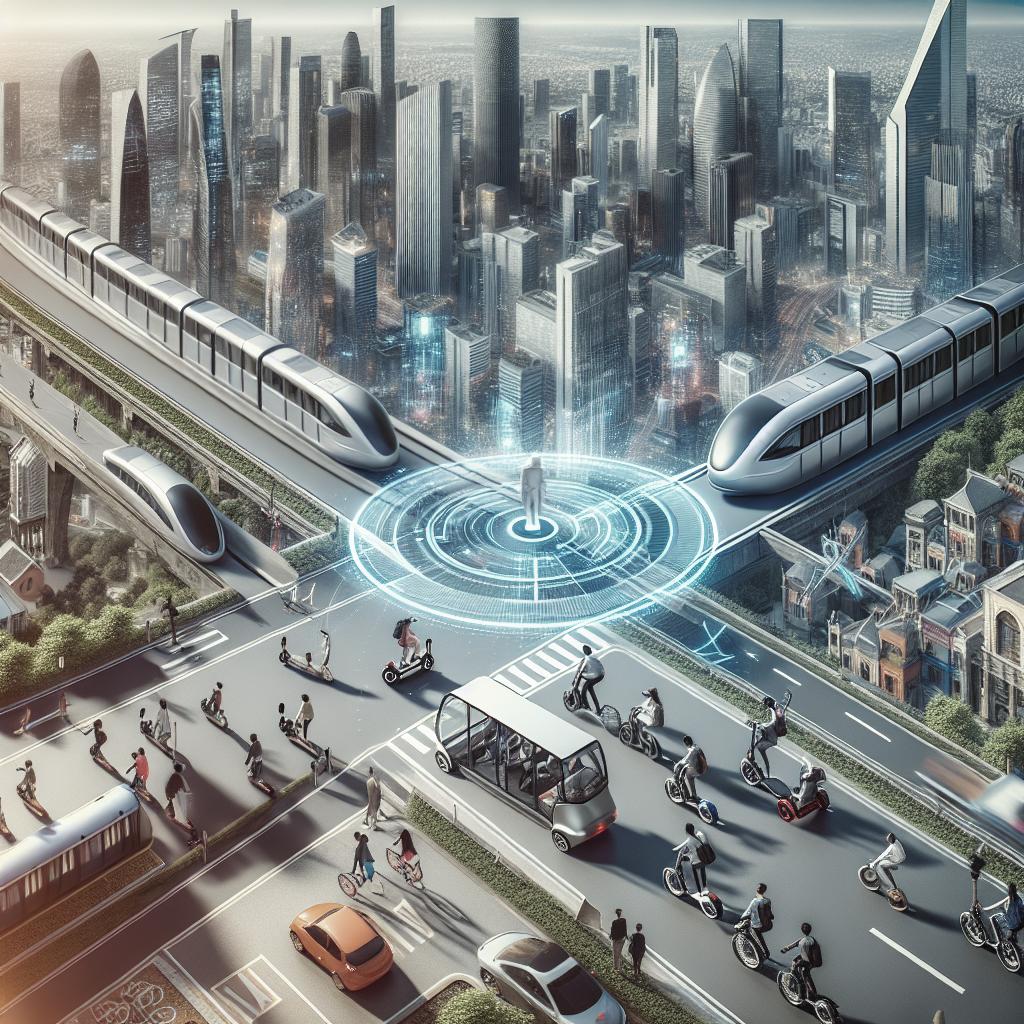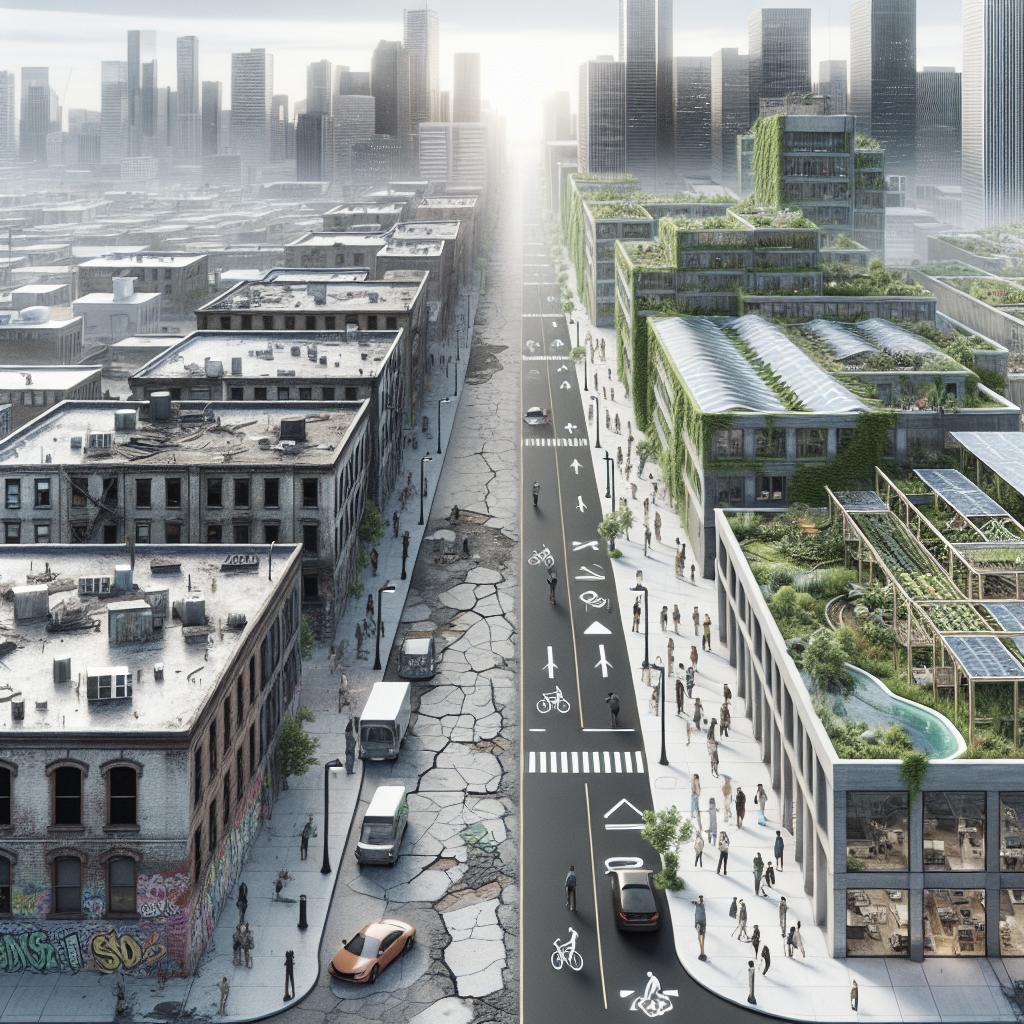<>
Innovative Solutions for Urban Transportation As cities around the globe continue to expand, the challenges associated with urban transportation become increasingly complex. From congested roads to inefficient public transit systems, urban areas require innovative solutions that can cater to the growing demands of their populations. This blog post explores eight cutting-edge developments that are transforming urban transportation. From self-driving cars and smart parking systems to mobile ticketing and high-speed travel, these innovations are poised to make urban transportation more efficient, sustainable, and user-friendly. Read on to discover how these advancements are paving the way for the cities of the future.1. Autonomous Vehicles
Autonomous vehicles, also known as self-driving cars, are one of the most promising advancements in urban transportation. These vehicles utilize a combination of sensors, cameras, and artificial intelligence (AI) to navigate roads without human intervention. By reducing human error, autonomous vehicles promise to improve road safety significantly. Furthermore, these vehicles can potentially reduce traffic congestion by communicating with each other and optimizing routes in real-time, leading to smoother traffic flow. In addition to individual use, autonomous vehicle technology can be integrated into public transportation systems. Self-driving buses and shuttles can provide efficient and reliable service to densely populated urban areas, cutting down on wait times and enhancing overall commuter experience. As this technology becomes more widespread, it’s expected to revolutionize city transport infrastructure and contribute to a reduction in greenhouse gas emissions by optimizing driving patterns and reducing idle times.
2. Automated Parking Systems
Automated parking systems (APS) offer a smart solution to the perennial problem of parking space shortages in urban areas. These systems use advanced robotics and AI to park vehicles in stacked platforms, significantly increasing the number of cars that can be accommodated in a given space. By eliminating the need for drivers to find and maneuver into parking spots, APS not only save time but also reduce emissions from idling and circling for parking. Moreover, the implementation of APS can free up valuable urban land for other uses. Traditional parking lots and garages, which occupy large areas of prime real estate, can be reduced in size, allowing city planners to repurpose these spaces for parks, commercial developments, or residential projects. This contributes to a more efficient use of urban space and supports the development of more livable, vibrant city environments.
3. Mobile Ticketing
Mobile ticketing is transforming the way people pay for and access public transportation. Through the use of smartphones and mobile apps, commuters can purchase, store, and validate tickets without the need for physical paper tickets or vending machines. This convenience boosts user satisfaction and reduces the cost and complexity of ticket distribution and management for transit authorities. Additionally, mobile ticketing enables seamless integration with other services, such as ride-sharing and bike rentals, allowing users to plan and pay for entire journeys within a single app. This level of convenience can encourage more people to use public transportation, helping to alleviate traffic congestion and reduce the environmental impact of urban travel.
4. Data Insights & Route Optimization
The use of big data and advanced analytics is revolutionizing route optimization for urban transportation. By collecting and analyzing data from various sources, such as GPS devices, traffic cameras, and social media, city planners and transit operators can gain valuable insights into traffic patterns, commuter behavior, and system performance. This information can be used to make data-driven decisions that enhance the efficiency and reliability of public transit services. For example, data insights can help to identify bottlenecks and optimize routes, reducing travel times and improving overall service levels. Additionally, predictive analytics can forecast demand and enable dynamic scheduling, ensuring that transit services are aligned with user needs. This not only enhances the commuter experience but also makes the best use of available resources, leading to more sustainable and cost-effective transportation systems.
5. Multimodal Accessibility
Multimodal accessibility refers to the seamless integration of different modes of transportation, such as buses, trains, ride-sharing services, and bicycles, into a cohesive and efficient network. By providing users with easy access to a variety of transportation options, cities can reduce dependency on private cars, thereby mitigating traffic congestion and lowering pollution levels. Advancements in technology, such as mobile apps and real-time information systems, play a crucial role in facilitating multimodal accessibility. These tools enable users to plan their journeys across multiple modes of transport, view real-time updates on service availability, and make informed decisions about the best routes and options. For city planners, the focus on multimodal connectivity supports the creation of more inclusive and resilient urban transportation systems that cater to diverse user needs.
6. Fare Collection from Accounts
The adoption of account-based fare collection systems is streamlining the payment process for urban transit users. Instead of relying on traditional fare media, such as paper tickets or smart cards, account-based systems link users’ accounts directly to their travel activities. This allows for more flexible and convenient fare payment options, including contactless payments, automatic fare capping, and integration with third-party services. Account-based fare systems also enable transit agencies to gather rich data on user travel patterns, which can be used to optimize services and design targeted fare policies. For example, differential pricing based on travel time or route can help to manage demand and encourage off-peak travel. By enhancing the efficiency and user-friendliness of fare transactions, account-based systems contribute to a more attractive and accessible public transportation experience.
7. Road Traffic as a Software
The concept of treating road traffic as a software system is gaining traction as cities look for new ways to manage and optimize transportation networks. By leveraging advanced technologies, such as IoT (Internet of Things), AI, and edge computing, traffic management systems can collect, analyze, and respond to real-time data from various sources, including vehicles, traffic signals, and environmental sensors. This approach allows for dynamic traffic management, where traffic signal timings can be adjusted based on current conditions to maximize flow and reduce congestion. Additionally, smart traffic systems can provide drivers with real-time information on traffic conditions, alternative routes, and parking availability, enhancing navigation and reducing delays. As more cities adopt these technologies, the vision of an intelligent, responsive road network that operates like a software platform is becoming a reality.
8. High-Speed Travel
High-speed travel technologies, such as magnetic levitation (maglev) trains and hyperloop systems, are poised to transform long-distance urban transportation. These systems offer significantly faster travel times compared to traditional rail or road transport, making them an attractive option for connecting distant urban centers and reducing travel time for commuters. Maglev trains, which use magnetic forces for propulsion and levitation, can reach speeds of up to 600 km/h (373 mph), providing a fast and smooth travel experience. Hyperloop systems, which involve passenger pods traveling through low-pressure tubes, have the potential to reach even higher speeds, drastically reducing travel times and enhancing connectivity between cities. The implementation of high-speed travel systems can alleviate congestion on existing transport networks and contribute to the development of more efficient, sustainable urban transportation systems.
How To Take A Screenshot On An Android Phone
Taking a screenshot on an Android phone is a simple process and can be done in a few different ways depending on your device. The most common method is to use the physical buttons on the phone. To do this, simultaneously press and hold the Power button and the Volume Down button for a couple of seconds. You’ll usually hear a camera shutter sound or see a flash on the screen, indicating that the screenshot has been taken successfully. Some Android phones also offer alternative methods for capturing screenshots. For example, certain models allow you to swipe three fingers down the screen or use voice commands with Google Assistant. Additionally, you can find the screenshot option in the Quick Settings menu by swiping down from the top of the screen to open the notification shade. Once you’ve taken the screenshot, you can access it in the Photos app or the Gallery, where you can edit and share it as needed. Summary of Main Points
| Innovation | Description |
|---|---|
| Autonomous Vehicles | Self-driving cars and buses enhance safety and reduce congestion through AI and communication technologies. |
| Automated Parking Systems | Use of robotics and AI to optimize parking space usage and reduce time spent searching for parking. |
| Mobile Ticketing | Smartphone apps for purchasing and validating public transit tickets, integrating with other transport services. |
| Data Insights & Route Optimization | Big data and analytics to optimize public transit routes, reducing travel time and improving service efficiency. |
| Multimodal Accessibility | Integrating various transportation modes into a seamless network for better user convenience and reduced car dependency. |
| Fare Collection from Accounts | Account-based systems offering flexible payment options and data for optimizing transit services. |
| Road Traffic as a Software | Using IoT, AI, and real-time data for dynamic traffic management and improved navigation. |
| High-Speed Travel | Technologies like maglev trains and hyperloop systems offering rapid long-distance travel options. |


